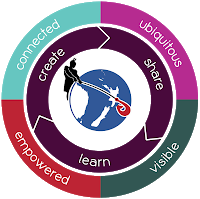A small number of teachers around the country have expanded their bubbles by going into the classroom under level 3 to educate youngsters whose parents can't keep them at home.
The highs and lows include dealing with student anxiety, controlling the rigorous sanitising processes, and the pain of not being able to give a worried child a hug.
Working at school under alert level 3, I am bubble teaching. In our classroom bubble are two teachers supported by a teacher aide. With a maximum of eight children based on whanau/family groups and including a bubble of students in years 2, 3, 4, 5 and 6.
A typical day
The students are dropped at the front gate and escorted in by one of our bubble groups. We try really hard to maintain our distance - the students were really great at following the level 3 processes, and would remind anyone if they were getting too close.
We head to class, hang up our bags (2m apart), walk in to class, sanitise our hands and take the roll and enjoy karakia - everyone on their own seat and distanced - on the mat.
Then we split off to a table within the class to attend to the distance learning via Google Hangouts and the lessons their teacher has set. We roughly all complete some reading, writing and maths broken-up by "bike, scoot and snack" breaks because the playgrounds are off-limits and these lessons are supported by two teachers and the TA.
Pros
We have been able to work with our bubble of students in a way that suits them best. There are activities available for them on arrival to school and they can ride their bike or scoot around for a good 10-15 minutes before coming in and settling into school work - they love to move. And this is such a child-centred learning experience for all.
As educators, we've been given the freedom from having to conform to a curriculum for the Ministry of Education and reporting to parents on reading, writing and maths.
We have the autonomy to work with children at their age/stage/level and we're able to have freedom from the curriculum and focus on the "key competencies" of life such as building resilience, working with others, critical thinking and problem solving etc- while building knowledge and skills.
We are giving the children opportunities to be creative and build on their passions. Our children have been working to their strengths, building their capabilities and discovering their niche.
Cons
Not all children of Aotearoa have had a good bubble experience. As frontline educators we will need the support of many agencies to help keep some families intact, and some children protected.
Some of the children in Aotearoa have had their anxiety escalated into such a high mode of basic function that we as a society will need to become more aware of and will have to support.
All in all I found this to be a positive experience from both a personal and professional perspective.
Nga mihi nui,
Tracy
All in all I found this to be a positive experience from both a personal and professional perspective.
Nga mihi nui,
Tracy













